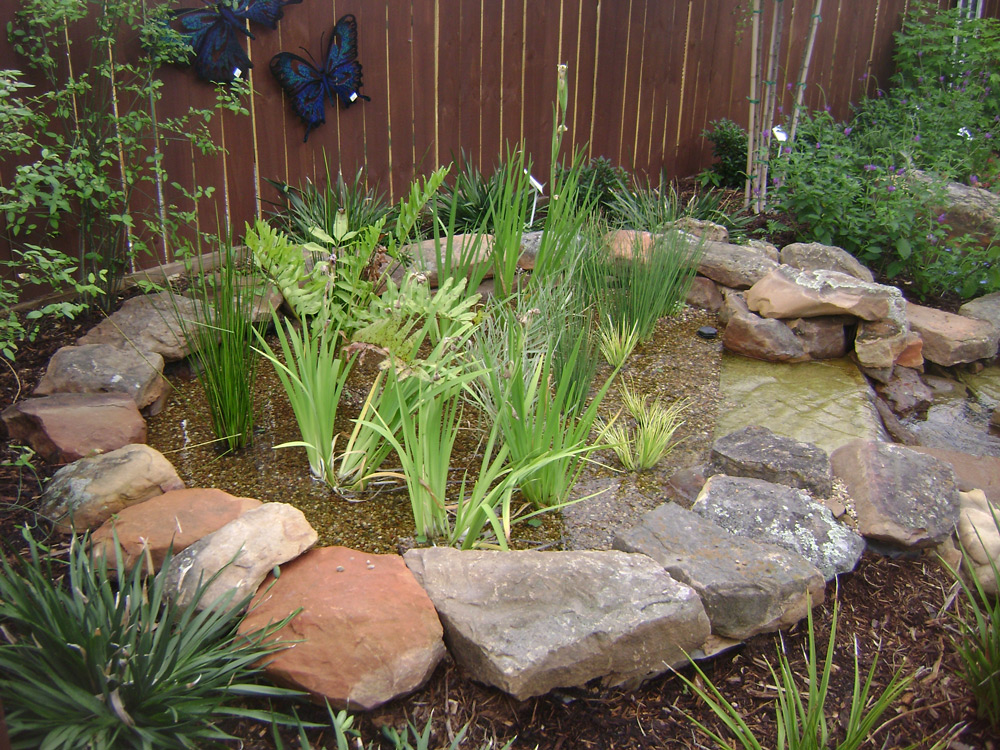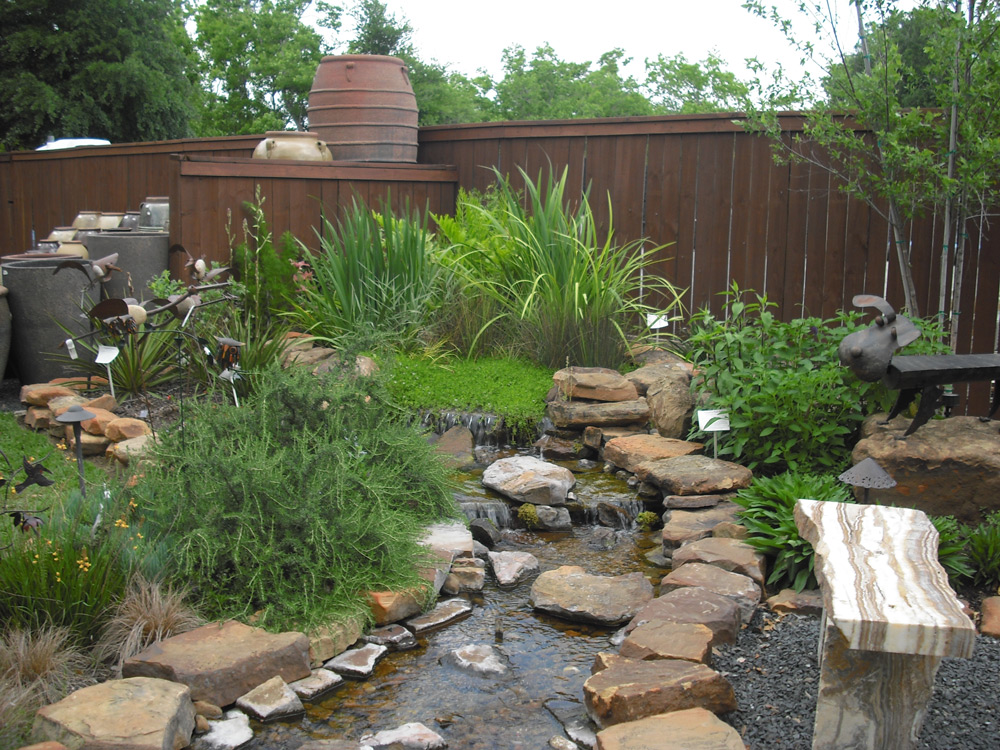Ponds 101 Chapter 10
Don't Forget the Plants!
OK, so your Koi are turning all that high protein kibble they overeat into poisonous poo, your biological filter is facilitating bacterial conversion of toxic ammonia and nitrites into loads of “harmless” nitrates – and your pond looks like green pea soup! What happened? Well, in a word – fertilizer. The end product of perfect biological filtration is plant food, and if you don’t have any other plants to consume it, algae will bloom, prolifically. Remember, balance is the key, and plants are that third critical component of the Nitrogen Cycle. Wherever possible, plants will send their roots into the water column and absorb as much of the guaranteed organic, water soluble, high quality fertilizer they can. Give them a place where they can thrive and plants will out-compete the algae, removing the nitrates and starving out the green water, leaving the pond clear and clean.
Anywhere their roots can reach the water plants will help remove nitrates and other nutrients, but one of the best places to optimize this ability is in a Bog. Bogs are shallow planted gravel beds where water from the pond feeds colonies of beneficial bacteria growing right where plant roots can pull out the nitrates they produce. Removal of the nitrates by bog plantings effectively starves out both floating and string algae, for the “cost” of weeding out the bog plants once a year. A Passive Bog just sits at the edge of the pond where water can seep into the planted gravel bed, but the most effective way to set up this all-natural super filter is in an Active Bog, where a constant flow of pondwater is pumped through the planted gravel. If that sounds vaguely familiar, it may be because a well-planted stream functions perfectly as an active bog. Figure on sizing the bog at about 10-30% of the total surface area of the pond for best results. Whether passive or active, bogs are easy to build into your new pond, or even to retrofit into existing water features – even Koi ponds. See Natural Filtration 103, Chapter 5 in the College of Filtration for details.


OK, so your Koi are turning all that high protein kibble they overeat into poisonous poo, your biological filter is facilitating bacterial conversion of toxic ammonia and nitrites into loads of “harmless” nitrates – and your pond looks like green pea soup! What happened? Well, in a word – fertilizer. The end product of perfect biological filtration is plant food, and if you don’t have any other plants to consume it, algae will bloom, prolifically. Remember, balance is the key, and plants are that third critical component of the Nitrogen Cycle. Wherever possible, plants will send their roots into the water column and absorb as much of the guaranteed organic, water soluble, high quality fertilizer they can. Give them a place where they can thrive and plants will out-compete the algae, removing the nitrates and starving out the green water, leaving the pond clear and clean.
Anywhere their roots can reach the water plants will help remove nitrates and other nutrients, but one of the best places to optimize this ability is in a Bog. Bogs are shallow planted gravel beds where water from the pond feeds colonies of beneficial bacteria growing right where plant roots can pull out the nitrates they produce. Removal of the nitrates by bog plantings effectively starves out both floating and string algae, for the “cost” of weeding out the bog plants once a year. A Passive Bog just sits at the edge of the pond where water can seep into the planted gravel bed, but the most effective way to set up this all-natural super filter is in an Active Bog, where a constant flow of pondwater is pumped through the planted gravel. If that sounds vaguely familiar, it may be because a well-planted stream functions perfectly as an active bog. Figure on sizing the bog at about 10-30% of the total surface area of the pond for best results. Whether passive or active, bogs are easy to build into your new pond, or even to retrofit into existing water features – even Koi ponds. See Natural Filtration 103, Chapter 5 in the College of Filtration for details.






